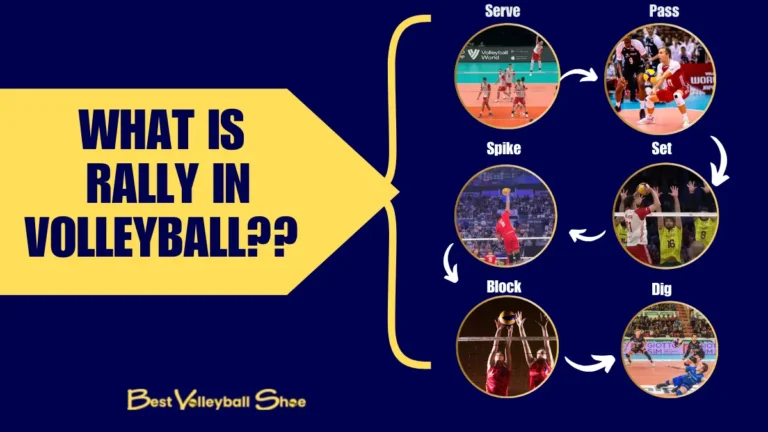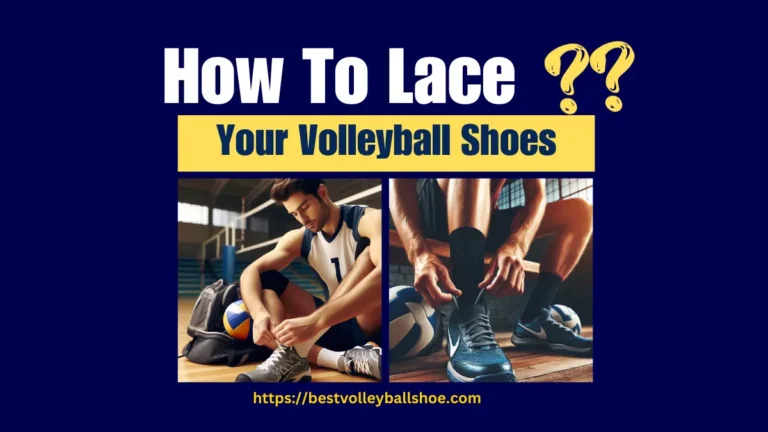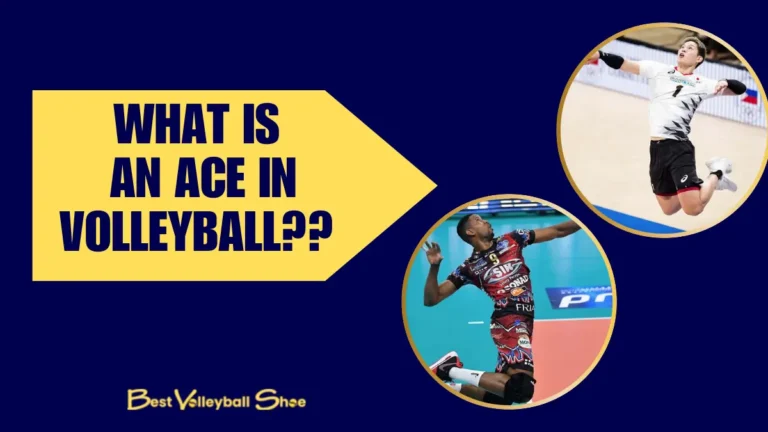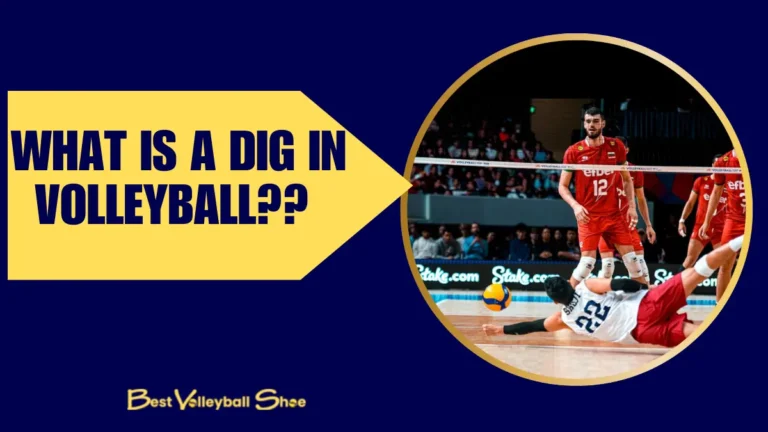Do Volleyball Shoes Make You Jump Higher? Exploring Their Impact on Vertical Jump Performance
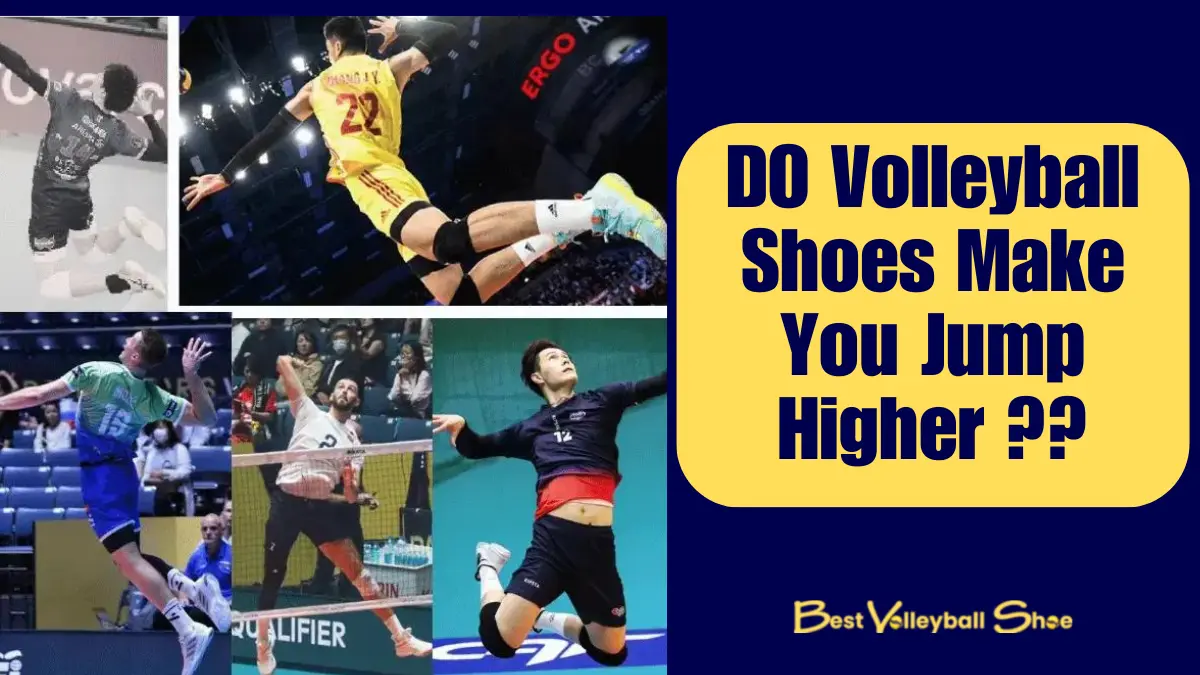
Vertical jump height is an important aspect of volleyball performance, impacting your ability to spike, block, and dig effectively. Many players wonder if simply wearing specialized volleyball shoes can significantly raise their vertical jump.
While volleyball shoes offer specific advantages for the sport, their impact on jump height is indirect.
Amazing jumping ability is a key weapon in the game! But have you wondered if special volleyball shoes can magically make you jump higher?
In this guide, we’ll describe the science of jumping, explore what truly boosts your vertical leap, and answer the age-old question: Do volleyball shoes make you jump higher and extra, or is there more to the story?
Buckle up and get ready to jump into the world of volleyball performance!
Do Volleyball Shoes Make You Jump Higher
In my opinion and experience, volleyball shoes don’t directly increase your vertical jump height. They can’t magically make your muscles stronger or improve your jumping technique. Instead can act as a catalyst in jumping higher but not in the development of actual jumping ability or technique.
For instance, research by Malisoux et al., examined the impact of different types of shoes and sports flooring on jumping. It found that cushioned shoes do not directly increase vertical jump height.
Instead, they focus on reducing impact forces, minimizing injury risk, and creating optimal biomechanical conditions for athletes through enhanced shock absorption. Thus, while they indirectly benefit jump performance, the shoes themselves do not magically improve jump height directly (PLOS).
However, the features like cushioning, stability, and comfort can indirectly contribute to a more powerful jump by:
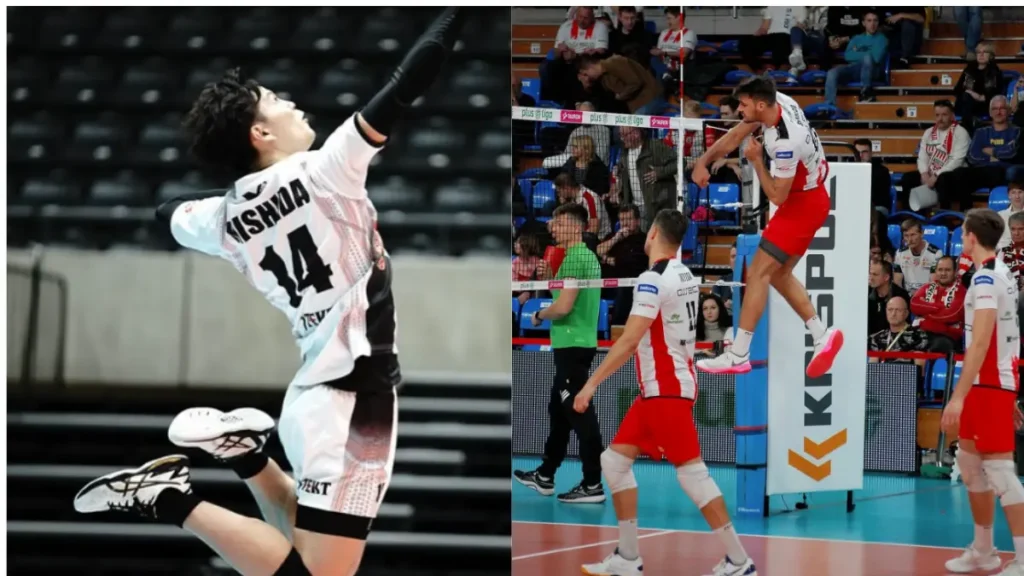
Understanding Vertical Jump in Volleyball
Imagine yourself reaching high above the net for a game-winning spike! That’s the power of a good vertical jump. It’s basically how high you can jump off the ground. In volleyball, a higher jump translates to:
So, how do you actually jump higher? It all comes down to two main factors:
It’s all about how you harness and unleash your power. Think of your legs as springs. The more force you can push down with, the higher you’ll fly up.
The Science Behind Jumping
There’s actual science behind it! Consider your body as a powerful spring.
Factors Affecting Jump Height
Jumping high is about combining these factors: strong muscles, efficient energy transfer, and a well-coordinated nervous system. By focusing on these aspects through training, you can reach your full jumping potential on the volleyball court.
| Components | What It Does | Why It’s Important |
| Muscle Powerhouse | Your legs have muscles that help you push off the ground and jump up. | Strong leg muscles make you jump higher, like a spring uncoiling. |
| Stretch-Shortening Cycle | When you squat before jumping, your muscles store energy, and then release it to push you up. | This helps you jump higher by using the energy stored in your muscles. |
| Launchpad Essentials | Your ankles and core must be strong and flexible to help push off the ground properly. | They help make your jump stronger and steadier. |
| The Conductor – Nervous System | This is your body’s way of telling your muscles when to jump. | It helps you jump at the right time with the right power. |
| Muscle Strength | Exercises like squats and lunges make your leg muscles stronger. | Stronger muscles can push harder, making you jump higher. |
| Explosiveness | Quick exercises that make you jump like box jumps help you move faster and stronger. | This helps you jump up quickly and with more power. |
| Jumping Technique | The way you stand and move your arms when you jump makes a big difference. | Good technique helps you use all your power to jump higher. |
| Footwear | Your volleyball shoes give your feet the right support and grip but don’t make you jump higher by themselves. | Good shoes help you use your leg power better without slipping. |
The Role of Volleyball Shoes in Jumping
Now that we understand the science behind a powerful jump, let’s see how volleyball shoes fit into the equation.
The shoes are designed to provide support and stability during rapid, multi-directional movements and traction on the volleyball court. They help maximize your performance, but their direct impact on jump height is indirect and minimal.
Volleyball shoes are there to support your feet and give you the grip you need, but they won’t turn you into Superman. They’re part of the puzzle, helping you use your strength and technique more effectively.

Here are the several key features of volleyball shoes:
Cushioning: Compared to regular sneakers, volleyball shoes often have thicker midsoles which contribute to half to one inch in height. Moreover, the cushioning absorbs shock when you land from jumps, protecting your joints and potentially allowing for a more explosive take-off for your next jump. It’s like landing on soft pillows compared to hard ground, the softer landing might help you jump higher next time.
Stability: Volleyball involves quick changes of direction and lateral movements. Volleyball shoes are designed to provide stability and support for your ankles and feet, preventing them from rolling inwards or outwards. This stability helps you transfer power from your legs to the ground more efficiently during a jump. Think of a stable base for your spring, it launches you straighter and higher.
Comfort and Fit: A good volleyball shoe should fit snugly but comfortably, allowing for natural movement of your feet. Proper fit prevents blisters and provides a sense of security, which can indirectly boost your confidence when jumping. Imagine feeling confident and comfortable on the court and you might jump a little higher just because you feel good.
Indirect Benefits of Volleyball Shoes on Jumping Ability
Volleyball shoes won’t directly make you jump higher, they offer some cool features that can indirectly contribute to a more powerful leap.
What They Really Do: They help you use what you’ve got — your strength and skills — more effectively.
Let’s explore these benefits
Enhanced Stability and Support
- Keeping You Steady: Shoes with good support help keep your ankles safe and your movements stable. This means you can move and jump with confidence, knowing your shoes have your back.
- Why It Matters: Stable shoes mean fewer injuries and more powerful moves. When you’re not worried about slipping, you can really give it your all.
Improved Traction and Its Impact
- Gripping Power: The soles of volleyball shoes are designed to grip the floor well. This helps you push off the ground without slipping, especially when you’re jumping.
- Boosting Your Jump: Good grip lets you transfer all your energy into the ground and push upwards. It’s all about making your effort count!
The Psychological Edge
- Feeling Confident: When you know you’re wearing top-notch shoes, it can make you feel more confident and ready to perform.
- How Confidence Helps: Confidence can make you play better. When you feel good, you’re more relaxed, focused, and ready to jump higher.
Beyond the Shoes: Approach to Jumping Higher
Looking at the Big Picture, jumping higher isn’t just about the shoes. It’s about taking care of your body, mind, and overall health to get the best out of your jumps.
Nutritional Considerations
Consider your body as a car. Food is your fuel! Eating the right foods provides the energy your muscles need to train hard and jump high.

Here are some key things to consider:
- Balanced Diet: Aim for a balanced diet rich in carbohydrates, protein, and healthy fats. Carbs provide energy for workouts, protein helps build and repair muscles, and healthy fats support overall health.
- Pre-Workout Meal: Fuel up 1-2 hours before training with a meal rich in complex carbs and moderate protein. This provides sustained energy throughout your workout. So, have a full tank before your jump training sessions.
- Post-Workout Meal: Within 30 minutes after training, replenish your energy stores with a meal rich in protein and carbs. This helps your muscles recover and rebuild, preparing them for even higher jumps next time. As refueling your jump car after a challenging workout.
- Hydration: Water is essential for optimal muscle function and recovery. Aim to drink plenty of water throughout the day, especially before, during, and after workouts. Your jump car needs water to run smoothly – stay hydrated for peak performance!
Mental and Psychological Aspects
The mind-muscle connection is powerful!
Here are some ways to train your mind for a higher jump:
- Thinking Positively: Your mind plays a big part in how you perform. Believing in yourself can actually help you jump higher.
- Visualization: Consider yourself executing powerful jumps during games, soaring high to block or spike the ball. This positive visualization can boost your confidence and prime your nervous system for peak performance. Think of it like mentally rehearsing your jumps for success.
- Accept Challenges: Jumping training can be tough, both physically and mentally. View setbacks as opportunities for growth and learning. Persistence and a “never-give-up” attitude are key to jumping higher.
- Finding a Jump Buddy: Having a partner to train with can boost motivation and keep things fun. Celebrate each other’s successes and offer encouragement during challenging workouts. Imagine having a teammate in your jump car – work together to reach your goals!
Recovery and Injury Prevention
Pushing yourself is important, but listening to your body is important. some ways to prevent injuries and ensure proper recovery:
- Rest and Recovery: Schedule rest days to allow your muscles to recover and rebuild. Think of your jump car needing time for maintenance – rest days keep you in top shape for jumping.
- Warm-up and Cool-down: Proper warm-up prepares your muscles for training, while a cool-down helps them recover. Imagine warming up your jump car engine before a race and letting it cool down afterward.
- Listen to Your Body: Pain is a signal that something is wrong. Don’t push yourself through pain! Take a break, assess the source of pain, and consult a doctor or physical therapist if necessary. Imagine your jump car having a warning light – listen to your body’s signals and address any issues before they become major problems.
Conclusion
Volleyball shoes do play a crucial role by offering stability and support, which boosts confidence during play. However, they are just one part of the equation when it comes to improving your jump height. To truly excel and jump higher, it’s essential to adopt a holistic approach that includes proper nutrition, mental strength, and consistent recovery practices. Together, these elements help you maximize your performance on the volleyball court.
Action Steps
Make sure you have the right footwear to support your movements, focus on building your physical strength, and maintain a balanced diet. Also, don’t underestimate the power of mental training and adequate rest. By integrating these aspects, you’ll not only jump higher but also enhance your overall gameplay and reduce the risk of injury. This comprehensive approach will equip you with the tools to elevate your athletic performance and achieve new personal bests in volleyball.
Frequently Asked Questions
Is it better to choose volleyball shoes with more cushioning or more stability?
The choice depends on personal preference and play style. More cushioning can help with shock absorption for jumps, while more stability is beneficial for quick lateral movements and overall ankle support.
Can the right pair of volleyball shoes help reduce knee pain?
While shoes alone cannot cure knee pain, the right pair can offer better cushioning and support, potentially reducing impact and strain on the knees during play.
